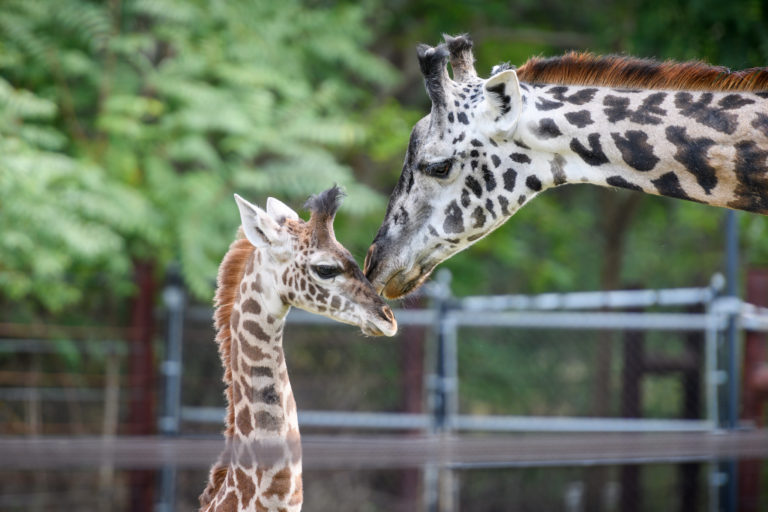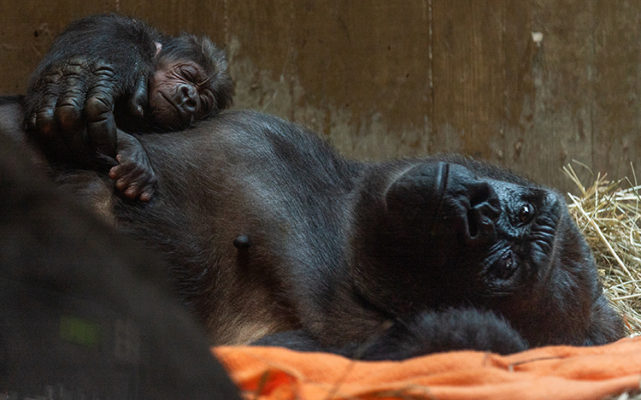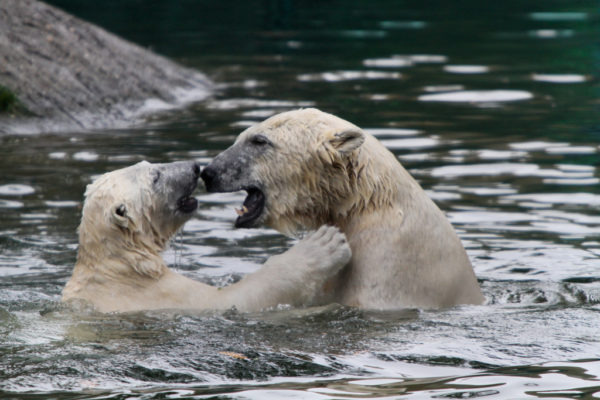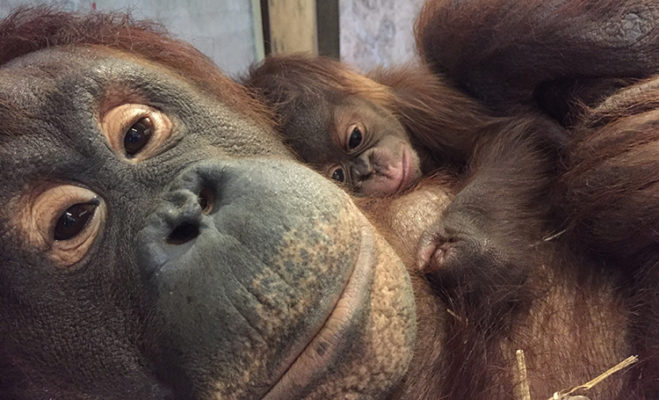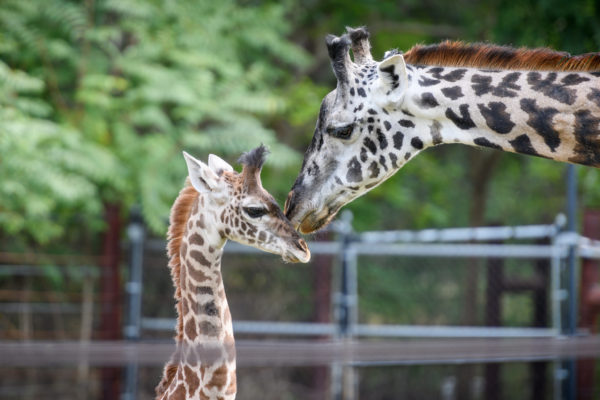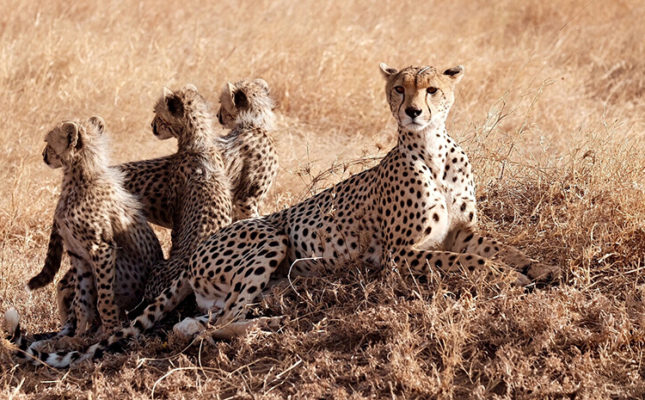Many moms have complained that kids don’t come with an instruction book. And that is true for the animal kingdom as well. But somehow, as with humans, animals have figured out how to be good moms—and some are just amazing at it.
Here are some cute animal photos of moms and babies, with just a few of the reasons why they make our list of the best animal mothers!
Gorillas
Photo credit: Roshan Patel, Smithsonian’s National Zoo, used with permission
We share 98 percent of our DNA with gorillas, so it’s not surprising that gorilla moms are similar to human moms in many positive ways. Gorillas bond and stay together as family units throughout their lives (males, females, and a few children). Before the babies learn to walk at around nine-months-old, they ride on their mom’s back by grasping her fur, which they know to do immediately after they’re born. “Mothers are highly protective of their young,” according the Gorilla Highlands website, “many have died trying to protect their offspring against poachers.” Recently, Calaya, a 15-year-old western lowland gorilla at Smithsonian’s’ National Zoo, won the hearts of the nation when she gave birth to Moke, which means “little one” in the Lingala language. Immediately after giving birth, Calaya sweetly held up her newborn and gave him a tender kiss, a little cleaning, and a cuddle (see video below).
Video courtesy of Smithsonian’s National Zoo, used with permission
“Animal care staff were surprised at how quickly Calaya and her infant bonded, given that Moke is her first offspring,” Smithsonian’s National Zoo and Conservation Biology Institute reported. “She cleaned the baby, cleared his nasal passages, and gently cradled him—exactly what the primate team hoped she would do.”
“Calaya is an excellent and attentive mother,” says the zoo’s animal keeper Melba Brown. “We are encouraged to see that she is cradling him. Occasionally, she will set him down on the ground, [but] she is always close by to tend to him.”
The western lowland gorilla, along with the other four subspecies of gorillas, are labeled as “critically endangered” due to hunting, habitat loss, and diseases.
Polar Bears
 Photo credit: Sander van der Wel, used with permission
Photo credit: Sander van der Wel, used with permission
A mother polar bear must make some personal sacrifices for her newly conceived offspring. First, she must gain extra weight—more than 400 pounds—to ensure the fetus is not reabsorbed by her body. Then she doesn’t eat for a few months while she goes into a hibernation state before giving birth. Her cubs are tiny—just one pound—and helpless when born, but even as they get bigger, they stay near their moms for two to three years learning how to survive. Then their moms teach them to be independent and off they go!
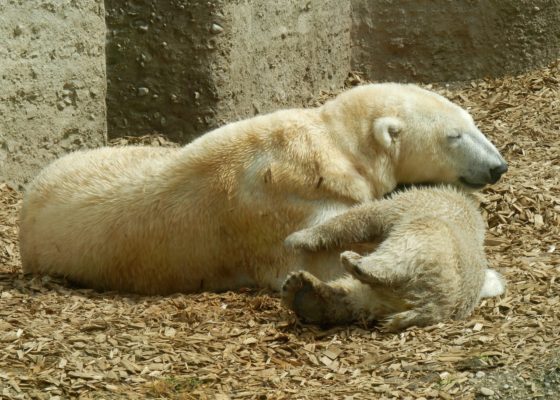
Like all great mothers, polar bears have been reported to risk their own lives for the lives of their cubs. All polar bears are considered “vulnerable or threatened” due to rising global temperatures that affect their habitat, hunting, and other environmental factors.
Orangutans
 Photo credit: Matt Spence, Smithsonian’s National Zoo, used with permission
Photo credit: Matt Spence, Smithsonian’s National Zoo, used with permission
“The orangutan mother–infant bond is one of the most intense and intimate I’ve ever seen in any animal,” says a researcher on the PBS educational video NATURE: Orangutan Eden. “They feed together. They are in the same nest. They are almost constantly in body contact.” Like many animals, baby orangutans are completely dependent on their moms at first. Weighing nearly four pounds at birth, they cling to their mothers, who carry them everywhere and provide all their food. In fact, orangutan mothers carry their babies around until they are five years old and they can breast feed them until they are eight years old!
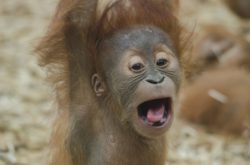
And even when the young orangutans can get around on their own, they usually stay close to their mothers. When they do eventually leave “home,” the female orangutans will often come back for visits with their moms. “Such prolonged association between mother and offspring is rare among mammals,” according to the Orangutan Foundation. “Probably only humans have a more intensive relationship with their mothers.” It is not uncommon to see a young orangutan holding hands with his mother, which is known as buddy travel. Young orangutans learn nearly everything they need to know from their mothers. Like gorillas, orangutans are listed as critically endangered.
Giraffes
 Photo Credit: Eric Kilby, used with permission
Photo Credit: Eric Kilby, used with permission
After a pregnancy of 15 months, giraffes give birth to a calf that weighs 100 to 150 pounds and is 6 feet tall! In less than a half an hour, the baby giraffe begins to stand and eventually walk with its mother’s gentle encouragement. Since the young giraffes cannot run fast, its mother will hide it or leave it with other mother giraffe “babysitters”—known as a creche—while she looks for food. “Like humans, [the baby giraffes] will start to miss their mother and will wait for her where she was last seen until she comes back,” according to Critter Babies website. And like most moms, giraffes don’t get much sleep. They are always on guard, protecting themselves and their offspring, so they only get about 30 minutes of sleep a day, usually just a few minutes at a time. Giraffes are now vulnerable to extinction, again due to poachers and habitat loss. There are just 97,500 giraffes left in the world.
Elephants
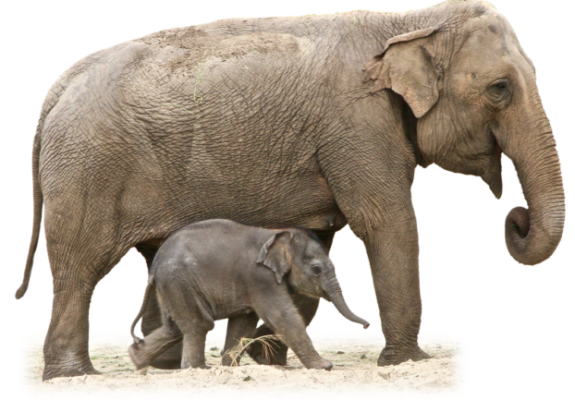
Move over Tiger Mom. Some are encouraging a new animal parenting style called the “elephant mom,” which focuses on protection and encouragement. It’s named after elephants because they are so dedicated to their offspring. Like giraffes, elephants share in the responsibility of caring and defending their young. Elephant moms will often come together to protect and save a baby elephant, even at their own risk. Elephants are loving creatures and moms stay close to their babies, bringing them back to the fold if they wander away, bathing them, nursing them, and teaching them survival skills. If a mother elephant dies before her baby reaches age two, it will likely not survive, despite the efforts of other female elephants. And elephants stay with their mothers for an average of 16 years. The number of these intelligent and sensitive creatures on the planet continues to decline due to poaching, the illegal ivory trade, and a shrinking habitat.
Cheetahs
 Photo credit: Susan Jane Golding, Flickr, used with permission
Photo credit: Susan Jane Golding, Flickr, used with permission
The cheetah mom is a hard-working single mother, having to raise between two and eight cubs at a time. In addition to feeding and teaching them, she must protect them from lions, hyenas, and other predators. To keep her litter safe, the mother cheetah moves her cubs to a new location every few days. The babies nurse until they are about eight months old and then they begin to learn to stalk and hunt, getting lessons from mom and practice time with their siblings. Cheetahs have even been known to adopt orphan cubs, as the Smithsonian’s Conservation Biology Institute discovered when they introduced a newborn cub to a nursing-mother cheetah. “She took right to the new cub and just groomed it right away and accepted it willingly,” cheetah keeper Lacey Braun told NPR. What a great mom! Like many of the big cats, cheetahs are vulnerable to extinction, and many are requesting they be added to the IUCN Red List as endangered.
Just as with human moms, animal moms are fiercely protective of their children and will do anything to keep them safe. Which animal mom do you most identify with?
